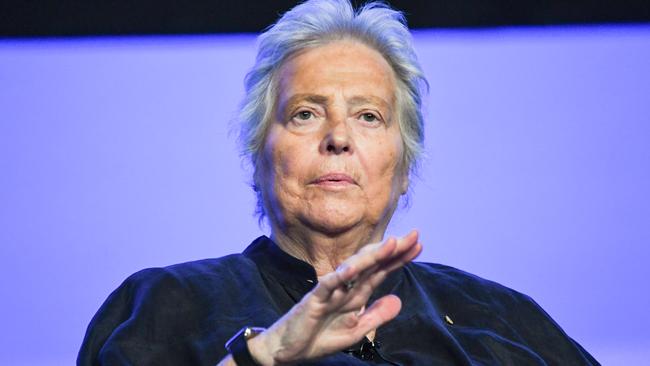Capacity mechanism would have limited spiralling energy prices, says former ESB chair Kerry Schott
Former Energy Security Board chair Kerry Schott says the former federal government’s failure to introduce a capacity mechanism is one of her great energy policy regrets.

Former Energy Security Board chair Kerry Schott says the government needs a capacity mechanism “quickly” to stabilise future energy prices, adding the current price crisis would not have spiralled out of control had the Coalition stuck with its planned National Energy Guarantee.
Speaking at the Australian Energy Week conference in Melbourne on Friday, Dr Schott sheeted home the blame for the current crisis on the 2018 turmoil around climate targets, including in the NEG, which ultimately led to the downfall of prime minister Malcolm Turnbull.
Dr Schott was chair of the Energy Security Board at the time, and said trading mechanisms in the NEG that would have forced smaller retailers to hedge against future power price rises – and at the same time underpinned generation capacity to ensure supply was available to consumers – would have acted as a capacity mechanism for the National Energy Market.
“Had we had a capacity mechanism in place it would have made some of the problems that we’re all living through at the moment, not go away, but they wouldn’t be anywhere near as bad as they have been,” she said.
Dr Schott said a similar trading scheme was likely to be one of the options presented to Energy Minister Chris Bowen by the ESB.
The second option would be to empower the Australian Energy Market Operator to run auctions to create an operating reserve in the NEM – effectively paying companies to have firm capacity on standby in case of failures elsewhere in the system.
Dr Schott told delegates to the conference that neither option was perfect. “The marketplace solution is certainly more efficient for consumers, but it will take time to put in and it’s complicated. And a lot of the smaller retailers don’t like it,” she said. “With the operating reserve approach, if AEMO get it wrong it will probably be a little bit more expensive. Neither of them is ideal, but we do need a capacity mechanism.
“Every other jurisdiction and country has got a capacity market – you can’t have big running renewables without capacity. It’s one of my great regrets that it’s taken so long to establish one.”
Dr Schott said she believed an operating reserve model would make it easier to exclude coal-fired generators from the mechanism in future, but said she did not believe gas plants could be excluded until hydrogen emerged as a major field source.
Amid uncertainty around what generation assets could be included in the proposed capacity mechanism, an ESB board member told The Australian coal-fired generators would probably be included in its options paper – but the final decision would be one made by political leaders.
Energy ministers agreed on Wednesday to accelerate the design of a mechanism, which is expected to guarantee investment in baseload gas, pumped hydro, batteries, coal and renewables generation by requiring energy retailers to lock in supply contracts with power companies in advance.
While including coal in the mechanism remains a point of tension with some state ministers, the ESB said it would be included as an option. “That will be an option that people can consider,” ESB director Clare Savage said on the sidelines of the Australian Energy Week conference.
“We will need coal in the short term to keep the lights on and, as we can see, keep prices low.”
A paper would be released by the ESB in the next few weeks canvasing a range of issues related to the capacity mechanism, said Ms Savage, who is also chair of the Australian Energy Regulator.
But she said the decision on whether coal would ultimately be included in the mechanism would be one made by the government.
Alinta said it was essential both coal and gas were included in the mechanism, which would put incentives in place to stop the early closure of power plants and create long-term signals for investment in dispatchable generation.
Origin Energy said it backed the capacity mechanism and the inclusion of generation sources including gas. “We strongly support the commitment to accelerate a capacity mechanism, the design of which should target new, flexible capacity that can support the rapid growth in renewables and underpin reliable power supply for customers, including storage, pumped hydro and gas peakers,” Origin chief executive Frank Calabria said.
EnergyAustralia, owner of the Yallourn and Mt Piper plants, said the mechanism would help drive investment. “Providing the right investment signals for new capacity is essential,” managing director Mark Collette said.



To join the conversation, please log in. Don't have an account? Register
Join the conversation, you are commenting as Logout